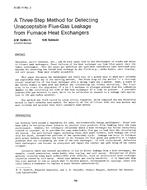The objective of the present work is to develop a neural network computer program to predict the next-day cooling load and use this prediction in conjunction with a real-time expert system to simulate management of a cold thermal storage system. The next-day cooling load prediction allows the ice thermal storage system to maximise off-peak utility rates and minimise mechanical system operation. The management system is designed to be used by mechanical engineers in the field of air-conditioning control and maintenance. The computer program is written with the aid of commercially available neural network computer software. The temperature data base includes hourly ambient temperature values for a typical year in Miami, Florida. The technique used to predict the required ice production of the thermal storage system is conducted by training a neural network with the use of definition, fact, and training network files. Once the network is trained, any temperature pattern for a 24- hour period can be used to calculate the required next-day cooling load. Neural network training included unique temperature patterns for ‘cold’ and ‘warm’ weather fronts, as well as seasonally adjusted ‘normal’ temperature patterns. The resulting cold thermal storage prediction is then entered into a real-time expert system for the control of the overnight chiller operation and ice storage production.
KEYWORDS: predictive controls, expert systems, air conditioning, load management, energy storage, calculating, computer programs, cooling load, cold sources, USA, ice, off peak electricity, controls, weather.
Citation: Symposium, ASHRAE Transactions, vol. 96, pt. 2, St. Louis 1990
Product Details
- Published:
- 1990
- Number of Pages:
- 4
- File Size:
- 1 file , 610 KB
- Product Code(s):
- D-18715


